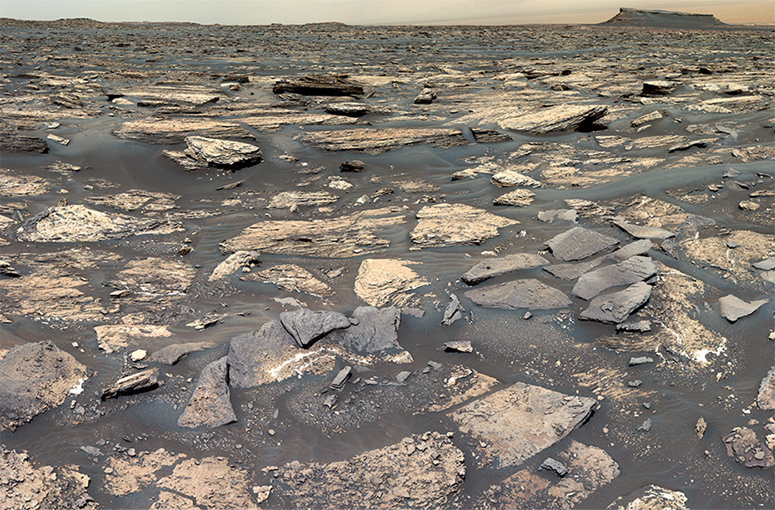NASA reveals a surprise: Mars is surprisingly similar to Earth

The US space agency NASA has made an important discovery that sheds light on the history of the planet Mars .
A team of scientists announced the discovery of high amounts of manganese oxide in samples of ancient lake bottom rocks on Mars, which indicates the existence of conditions very similar to Earth.
These samples were found using an instrument on board NASA's Curiosity rover.

Conditions similar to Earth
Such high amounts of manganese oxide are rare on the surface of Mars, as they indicate the presence of an oxygen-rich watery environment in the distant past, which shows that Mars experienced environmental conditions similar to those found on the surface of Earth.
In a statement by Nina Lanza, the principal researcher on the NASA spacecraft team, published by the Science Alert website, she confirmed that the environment of the ancient Gale Crater Lake, as revealed by these ancient rocks, indicates a habitable environment very similar to Earth.
She explained that the presence of manganese minerals in rocks is further evidence of the existence of a long-lived, habitable lake environment on Mars.

For his part, Patrick Gasda, a geochemist, pointed out that the discovery of manganese oxide in high concentrations in beach sediments on Mars was surprising, as scientists did not expect this discovery given the difficulty of forming such concentrations in current Martian conditions.
It is worth noting that the scientific team concluded that the most likely scenario is the deposition of manganese oxide along the shores of the lake in the presence of an oxygen-rich atmosphere, which is considered additional evidence of the existence of a habitable lake environment in the ancient “Gale Crater” on Mars.
However, the question of where this oxygen came from remains without a clear answer. Meteorite impacts early in Mars' history may have released oxygen from surface ice deposits, or microbes may have contributed to the oxidation process and left biomarkers in the rocks.
A mixture of sand, silt and clay
In addition, the sedimentary rocks explored by the rover are characterized by a mixture of sand, silt and clay, indicating the diversity of environmental conditions that Mars experienced in the past.
Source : websites

